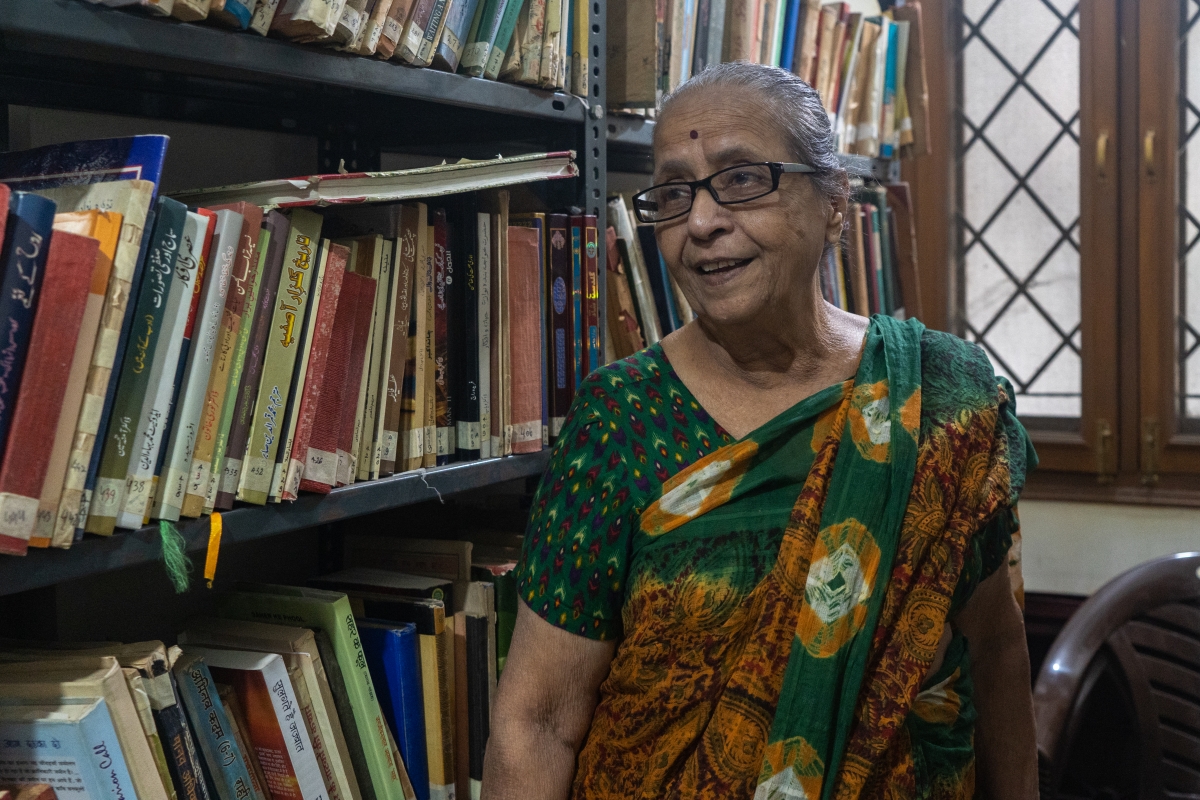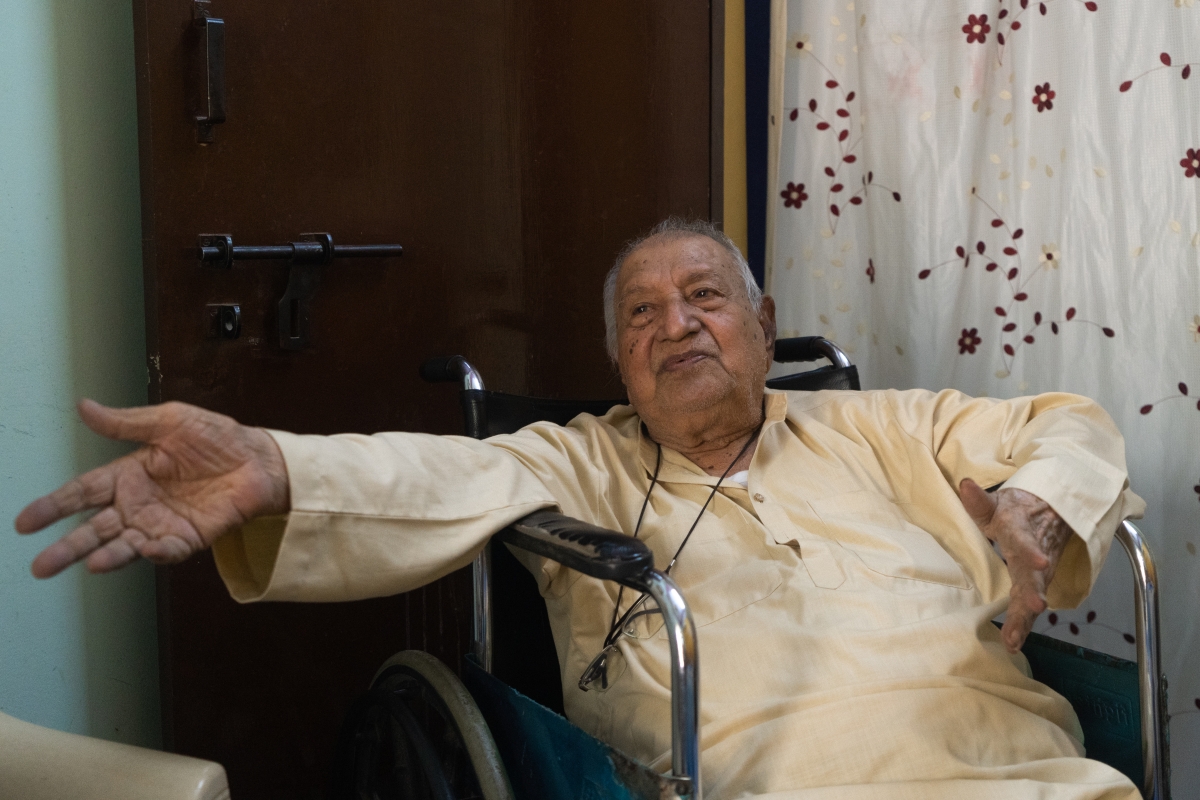The Left's Role in Ushering Hyderabad Into a Democratic Era Through Ballots and Bards
In the poll-bound state of Telangana, the past has figured heavily in the present-day fight between the incumbent regional Bharat Rashtra Samithi (BRS) party and two national parties, the Indian National Congress (INC) and the Bharatiya Janata Party (BJP). The All India Majlis-e-Ittehadul Muslimeen (MIM) hasn’t been a mute spectator either.
A large part of the discourse has centred on the lead-up to annexations of the Nizam's princely kingdom – which incorporated Telangana, Northeastern Karnataka and Maharashtra’s Marathwada region – by the Indian Union in 1948.
Whether it is the Telangana BJP leader and junior home minister Kishan Reddy or his boss Amit Shah, both have sought to portray Muslim rulers as lording over the majority Hindu population. In their endeavours to polarise voters, the BJP has gone so far as to equate all of Telangana’s Muslims with those who sat atop the princely state’s feudal setup over seven decades ago. As the BJP state president, Reddy also promised that his party would scrap Muslim educational quotas if it came to power.
While the saffron party showcases September 17 – when the Nizam merged his autonomous kingdom into the Indian union – as “liberation” from Muslims in its recently released manifesto, it is seen as “integration” by the MIM and BRS.
Yet the BJP played no role in incorporating Hyderabad into India or the emancipation of its subjects from princely rule. Only the INC and more so the Left, whose anti-Nizam struggle was different from the one carried out by the former, can stake a claim to these feats.
And what better way to integrate a population into a more democratic order than to function as the main opposition to the then supreme national party?

Hyderabad state. Photo: Clarendon Press, Public Domain
Leftists as integrators
Two years before Operation Police in 1948, the communists in Andhra Pradesh (then a part of the bordering Madras Presidency province) and Hyderabad’s urban youth who took to Marxist ideals helped rural peasants rise against the high-handed exploitative, landlords within the state’s Telangana districts. Many of these landlords were a part of the Muslim establishment’s co-opted Hindu aristocratic elite.
With the Indian military incorporating the Nizam-ruled dominions into the union, their sights were set upon quelling the peasant revolt in Telangana. There were internal differences among leftists undertaking the campaign against the Indian union subsequent to the Nizam being deposed. Whether to continue that armed struggle had India’s leftists at loggerheads.
Because Joseph Stalin sought to establish ties with Jawaharlal Nehru, some wanted to carry out their activities within the ambit of the Indian electoral landscape.
Oudesh Rani Bava, former vice president of Hyderabad city’s Hindi-Urdu Progressive Writers Union states, “PM Nehru believed that a strong opposition was necessary for a democracy. Thus, the presence of communists under the PDF (People’s Democratic Front) contesting against the Congress in the 1951 assembly election enabled the state’s people to participate in the exercise of franchise.”

Oudesh Rani Bava. Photo: Siddhant Thakur
It was a new era for Hyderabadis.
After all, the paramount British power no longer hovered over a semi-independent feudal monarchy, especially due to the state’s incorporation into a more democratic setup. Be it through cultural or political activity, the Left in Hyderabad helped bring about the dawn of another epoch – one that saw a lot of communal strife and sorrow in its wake.
Integration by empowerment and enfranchisement
Nizam-ruled Hyderabad was home to some cosmopolitan, syncretic traditions that date back to previous Muslim and Hindu Deccan dynasties. Like the princely state of Jammu and Kashmir, Hyderabad was ruled by a king from the religious minority. However, the communal divide that contributed to India’s partition would only exacerbate nascent fault lines throughout the state.
Post-1948, the tables had turned.
Although several Hindus too lamented the end of Asaf Jahi rule, especially with the lore of Nizam VII Osman Ali Khan’s generosity, personal secularism, and certain democratic attributes still intact. Yet, many were understandably happy with the emergence of a setup in which Hyderabad’s Hindu majority would have more of a fair share in their land’s rule.
The supplanted ruling minority was reeling from the Police Action massacres. Atrocities committed by the MIM’s Razakar militia seeking to uphold Muslim rule before 1948 haunted many Hindus.
“Much before they would economically revive themselves by going overseas to the Gulf about two decades later, the Muslim population felt it had no voice after the Asaf Jahi dynasty’s ouster,” elaborates Mir Ayoob Ali Khan, a former Times of India Hyderabad special affairs editor and Deccan Chronicle bureau chief.
With the CPI (Communist Party of India) banned, Hyderabadi communists who ran for public office in the 1951 assembly elections did so under the PDF banner. The Congress too had its Muslim candidates, but they were mostly from the elite stratum.
According to ECI data about the 1951 polls, the PDF had the second highest vote share of 39.59% among national, state, and independent parties of Hyderabad – second only to the Congress’ 42.32%.
Though in the Telangana constituencies, where Hyderabad’s leftists removed the feudal establishment’s yoke from many villages when carrying out the insurrection against landlords, the PDF mostly reigned supreme. Comrade M.K. Moinuddin was in charge of campaigns in the Gajwel, Siddipet, and Medak constituencies.
Despite being part of the gentry, Moinuddin participated in student union struggles against the establishment as well as the uprising in Telangana. He remembers, “The result of our struggles through which we pushed for land to tiller reforms, before and after 1948 was the Telangana Tenancy and Agricultural Lands Act, 1950.”
Moinuddin stresses how people in those and other Telangana districts used to be ready to help out with canvassing, attending rallies, and voting due to the Left’s grassroots work in bringing about land reforms. In Siddipet and Gajwel respectively, Gurva Reddy and Pentem Vasudeva defeated Congress candidates by huge margins.

M.K. Moinuddin. Photo: Siddhant Thakur
But this journey to healing wasn’t solely about winning or having Hyderabadis partake in elections.
The PDF and many other associated artist guilds followed CPI stalwart P.C. Joshi’s call to carry out cultural activity alongside the political in both letter and spirit.
Art as a salve
No one embodied Joshi’s advice more than Makhdoom Mohiuddin.
Mohiuddin was a renowned poet, trade unionist, and Telangana Rebellion figurehead who would later go on to become a legislator of a new Andhra Pradesh state that was carved out of a trifurcated Hyderabad in 1956.
Ayoob Ali Khan elaborates, “Makhdoom didn’t just represent a symbol for the political empowerment of Hyderabad’s Hindus and Muslims, but also the zeal to reestablish solidarity between them. Whether it was spearheading initiatives to oppose any remnants of the banned Razakars or holding counter-rallies against the Hindu Mahasabha as well as the Arya Samaj, he was at the forefront.”

Makhdoom Mohiuddin. Photo: Yunus Lasania
Although he lost against the INC’s Masooma Begum in 1951, Mohiuddin always had a way with people. Khan mentions that when reciting his lines at mushairas (poetic gatherings) or any sort of political congregation, Mohiuddin could influence voters and audiences like no other.
Such verses include:
“Kaho Hindustan ki jai!
Qasam hai khoon se seenchay hue rangeen gulistaan ki
Qasam hai qasam hai khoon-e-dehqaan ki, khoon-e-shaheedaan ki”
(Say ‘Long live India!’
On the blood through which this garden has bloomed, we swear
On blood of the farmer we swear, by the blood of martyrs we swear)
“Taffariqa-e-mazhab-o-millat ke mitaane de mujhe
Khwaab-e-farda ko bas ab haal banaane de mujhe
(Obliterate the discords between religion and communities I shall
And turn tomorrow’s dreams into today’s reality I shall)
Clearly, his poetry and politics were intertwined.
Of course, there is no better medicine than laughter.
Humour poets with ties to the communist factions not only helped Hyderabad’s people recover from the tragedy of Police Action, but they also held a mirror to their elected representatives with their searing wit and local flavour of the Deccani dialect.
After the trifurcation of the erstwhile princely state and the formation of Andhra Pradesh, one such humour poet was Ghulam Sarwar “Danda.” He wrote,
“Be-kaari, be-rozgari
Ye aam hai beemari
Rozgar se lagana
Sanjeeva Reddy mama”
(Idleness, unemployment
These widespread diseases
For which jobs are the only cure
My Chief Minister Uncle Sanjeeva Reddy)
Making people laugh in joyous times is no monumental achievement, but to do so during periods of tragedy and transition merits praise.
The left might not be the powerhouse it once was in Hyderabad city and Telangana. However, it surely paved the way for both to reignite their distinct, secular identities after all the religious hatred that surfaced before, during, and after independence. Today, as many elements seek to leverage heavily skewed narratives of the past for electoral mileage – especially with Amit Shah offering free trips for Telangana voters to the Ram temple in Ayodhya – Makhdoom Mohiuddin’s call for an inclusive, democratic, and proletariat-friendly Telangana still resonates among its citizens.
Daneesh Majid is a Hyderabad-based writer and researcher on South Asian culture and security.
This article went live on November twenty-sixth, two thousand twenty three, at fifty-four minutes past twelve at noon.The Wire is now on WhatsApp. Follow our channel for sharp analysis and opinions on the latest developments.




